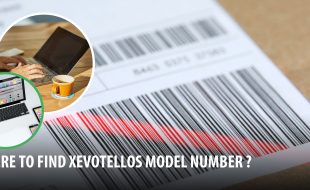Table Of Contents
- What is a Long Sales Cycle?
- Advantages
- Disadvantages
- Why Long Sales Cycles Need a Different Playbook
- Case 1: Building Awareness in Niche Markets
- Case 2: Nurturing Mid-Funnel Engagement Through Education
- Case 3: Retargeting Stakeholders, Not Just Leads
- One Note on Execution: Why Support Matters
- What Makes These Campaigns Work
- Treat LinkedIn as a Narrative Channel
LinkedIn Ads for B2B SaaS with Long Sales Cycles: A Case-Based Approach
Saas LinkedIn Ads work best when it comes to long sales cycle. Still, many people consider LinkedIn more like an instant conversion medium. There is no wrong in that approach but there are other approaches as well.
However, to effectively nail the LinkedIn ads format, there needs to be enhanced clairty on long sales cycle. What is it? And how it can be beneficial. Let’s dive right in and start our journey to understand the fundamentals first.
What is a Long Sales Cycle?
Long sales cycle is a normal sales cycle, that just takes a longer amount of time. In some cases, sales professionals have noted that the whole process of initiating to closing the sales deal can take upto a year. However, that does not mean that it is bad.
Sales cycle can become longer due to several different reasons. However the most prominent reason behind this change can be due to a change in the buying behavior or a change in market sentiment. Which might compel users to conduct more extensive research on a subject or an item.
Advantages
In general, long sales cycle involve expensive or novelty items. It can also be a multi-million dollar deal. In other words, most cases that involve long sales cycle generally include high payoffs.
Another good aspect of a long sales cycle is enhanced customer loyalty. Long sales cycle allows a company to build relationship with the customer. Therefore, evoking higher sense of loyalty.
Disadvantages
However, long sales cycle is not always good. In some situations, a long sales cycle can compel a person lose out opportunities. In other words, it can steer people towards other businesses. Therefore, long sales cycle is only successful when something intangible, yet unique product is at stake.
Another challenge of long sales cycle is a lack of a medium of tracking customer behavior. In ither words, there is no actual means of tracking customer interaction and behavior. Therefore, increasing the chance of losing out sharper.
Why Long Sales Cycles Need a Different Playbook
B2B SaaS isn’t a swipe-your-card-and-go purchase. For many companies, especially those selling enterprise software or workflow-critical platforms, sales cycles stretch for months, sometimes quarters. You’re not just convincing a user; you’re winning over a buying committee with multiple layers of decision-makers, stakeholders, and influencers.
That makes performance marketing tricky. You can’t rely on immediate conversions to measure success, and a single campaign won’t carry the weight. What you need is a longer-term approach, and LinkedIn Ads, when used strategically, can be a strong piece of that puzzle.
Let’s walk through what actually works by looking at a few case-based examples.
Case 1: Building Awareness in Niche Markets
A mid-sized SaaS company targeting compliance managers in the financial sector faced a familiar issue: low inbound volume from cold outreach and poor email engagement rates. Their product was complex and highly specific, which meant cold calls often fell flat.
They launched a six-month LinkedIn campaign targeting job titles like “Risk Officer,” “Regulatory Manager,” and “Head of Compliance” across Australia and the UK. But instead of pushing demos from day one, they began by promoting a series of concise explainer videos that showcased real-world compliance problems and how their platform resolved them.
The result? A 47% increase in brand search volume and a notable lift in direct inbound inquiries mentioning LinkedIn as the first touchpoint. Conversion didn’t happen on LinkedIn, but consideration started there.
Case 2: Nurturing Mid-Funnel Engagement Through Education
Another B2B SaaS firm, offering a resource planning tool for large engineering consultancies, had high awareness but a low demo-to-close conversion rate. Sales said prospects “got interested, but didn’t fully understand the use case.”
To address this, they transformed LinkedIn into an educational channel. Carousel ads were used to break down complex workflows into visual sequences, while Sponsored Content featured case studies from known industry players. They also used LinkedIn Lead Gen Forms to offer a “SaaS Implementation Readiness Checklist,” which served as a useful conversation starter for sales teams.
By tracking LinkedIn engagement and syncing leads with their CRM, they were able to spot key behavioral patterns—people who clicked on at least two carousel ads were significantly more likely to book high-quality demos. These insights later helped refine their outbound scripts.
Case 3: Retargeting Stakeholders, Not Just Leads
One of the biggest mistakes SaaS marketers make is focusing only on the person who fills out the form. But in a B2B SaaS sale, that person might not even be the budget holder.
A growth-stage SaaS firm selling legal tech used LinkedIn retargeting to reach everyone who visited key product pages, not just form submitters. They created audience segments for influencers (e.g., Paralegal Managers), decision-makers (e.g., Heads of Legal), and technical stakeholders (e.g., IT Managers).
Then, they ran tailored campaigns: explainer videos for influencers, ROI-focused assets for decision-makers, and integration-focused content for IT. The move resulted in longer engagement time across each group and higher email response rates from follow-ups.
One of the key takeaways from their campaign manager: “If you’re not segmenting your content based on stakeholder type, you’re wasting budget.”
One Note on Execution: Why Support Matters
Running multi-stage, persona-targeted campaigns like these takes more than ad spend—it takes strategic discipline. From sequencing your content to setting up CRM integrations, the backend matters just as much as the creative.
That’s why many SaaS LinkedIn Ads brands with longer sales cycles turn to an ad agency for LinkedIn to streamline the process and ensure alignment between marketing and sales.
An experienced agency doesn’t just push traffic—they build a framework that nurtures buying intent over time.
What Makes These Campaigns Work
There’s a thread running through all three examples: context-first thinking. Instead of pushing a free trial or demo link right out of the gate, each campaign was tailored to match where the audience was in their journey.
That means:
- Using video to start conversations, not just sell features
- Offering useful, ungated tools as lead-ins
- Creating segmented retargeting strategies that mirror internal buying committees
It also means resisting the urge to measure everything by the immediate pipeline. Long sales cycles reward patience, thoughtful sequencing, and knowing how to nudge without overwhelming.
Treat LinkedIn as a Narrative Channel
Think of LinkedIn less like a billboard and more like a slow-drip conversation to effectively nail SaaS Linkedin Ads format. For B2B SaaS companies, especially those with complex or high-ticket products, your job isn’t just to advertise—it’s to educate, nurture, and build consensus.
Do that well, and you won’t just book more demos—you’ll close with warmer leads, shorter timelines, and higher confidence across the buying group.
Let me know if you’d like a version of this article with visuals or charts outlining the case studies—it could also work well as a downloadable content upgrade.
Read More:















